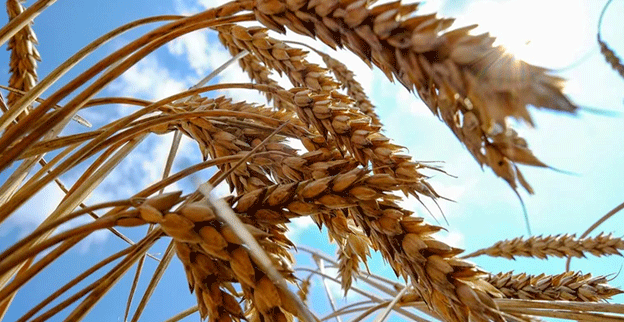Russia, the world’s largest wheat exporter, faces a significant challenge in 2025 as wheat production is projected to drop to 78.7 million metric tons, according to SovEcon. This decline, compared to 82.4 million metric tons in 2024, is attributed to unseasonably warm weather across key agricultural regions.
The unusually high temperatures have drastically reduced snow cover in central and southern Russia, leaving wheat crops vulnerable. Snow acts as a natural insulator, protecting winter wheat from extreme temperature fluctuations. In the Volga region, snow levels remain relatively normal, but elsewhere, the lack of adequate snow cover could accelerate wheat’s growth cycle prematurely. This premature vegetative development increases the crop’s sensitivity to potential frost damage should cold temperatures return.
Another threat to the wheat crop is the formation of ice crusts, a phenomenon becoming more frequent in recent years. Ice crusts form when melted snow refreezes, creating a solid layer of ice that hinders oxygen access and root development in winter wheat. This condition, already observed in affected regions, can lead to significant crop losses.
Warm weather also creates favorable conditions for pests and plant diseases to thrive. Without the natural pest control provided by cold winters, farmers may face increased infestations and disease outbreaks, further reducing yields. In November, SovEcon reported that 37% of the wheat crop was already in poor condition, raising alarms for the coming season.
Broader Implications
The anticipated production decline could affect global wheat markets, given Russia’s key role as a wheat exporter. Lower yields may lead to higher domestic prices, tighter global supplies, and increased food security concerns in wheat-importing nations. Additionally, persistent climate anomalies like those observed in Russia highlight the broader challenges of adapting agriculture to a changing climate.
The forecasted decline in Russia’s wheat production underscores the vulnerability of agriculture to climate anomalies. Farmers, agronomists, and policymakers must collaborate on strategies to mitigate these risks. Investments in crop breeding for resilience, improved forecasting tools, and sustainable farming practices will be critical to safeguarding future harvests in the face of climate variability.
Error





